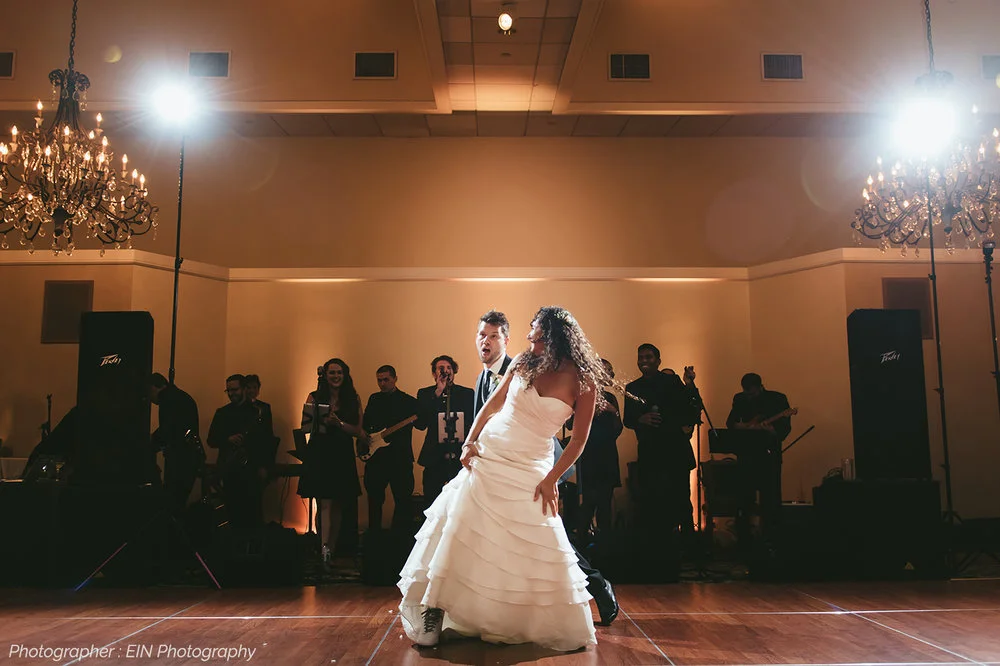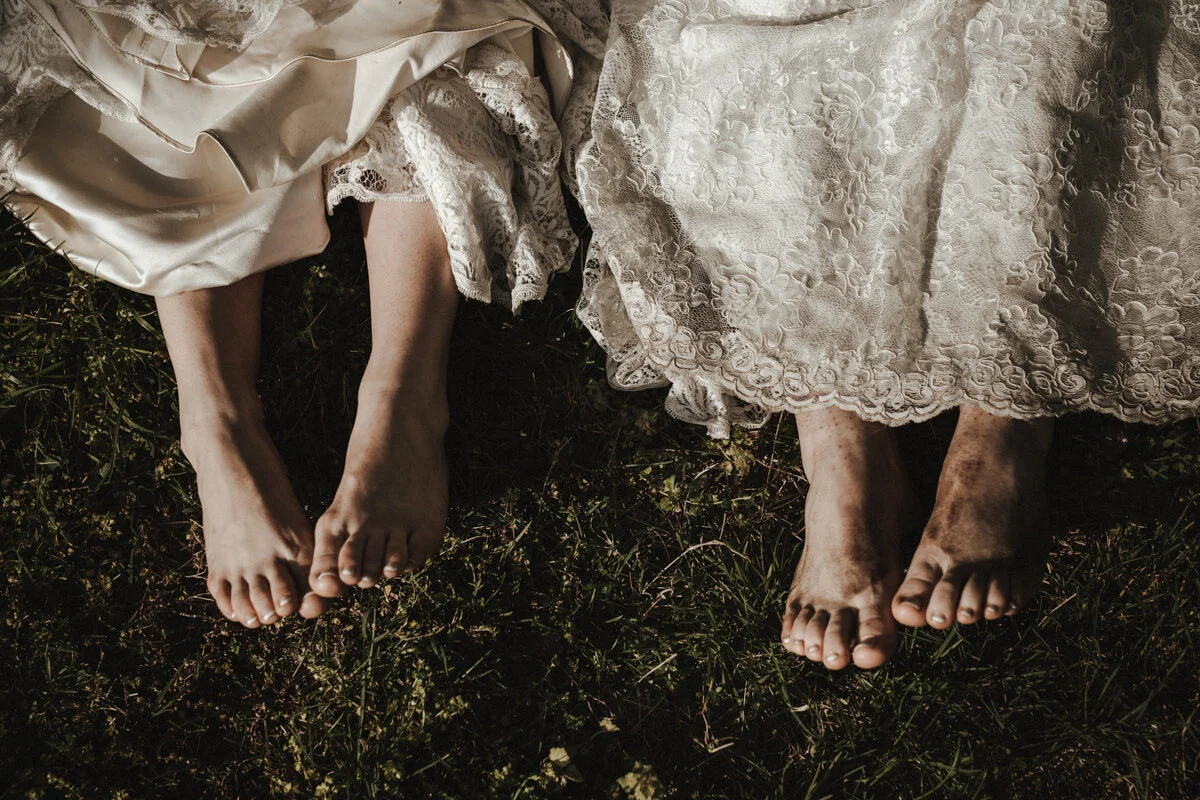How to Have an Unforgettable (and Unconventional) First Wedding Dance
/It’s time we reframed how we think of equality within the bounds of marriage. In step with political gains around who has equal access to the institution of marriage, we are also seeing a fight for equality within our committed partnerships, no matter our sexual orientation or gender identity. Through thoughtful planning and authentic expression, our weddings can play a central role in laying the foundation for more equal unions.
The reason we have to be so intentional about making our weddings an expression of egalitarianism is because the institution of marriage was not founded on these values at all. In fact it was mostly founded on a philosophy of ownership, and the idea that a man’s wife is his property. If you’re engaged with Catalyst you probably already know these suffocatingly heteronormative roots of marriage, but you’re also madly in love and want to make your union official! How do we reconcile these two opposing ideas?
Thankfully, many years and many changes have occurred between the dawn of marriage and today. We live in a time when the concept of marriage is part of an evolving and open dialogue. We have the opportunity to consider what marriage means to us, and how we will make it more beautiful, more honest, and more fair than ever before.
Today’s committed couples are finding ways to honor the essence of love, family, commitment, and sharing in their marriages while simultaneously releasing the legacy of hierarchy and immovably separate gender roles. As we lovingly craft a new embodiment of marriage, we are also reimagining the modern wedding. Today’s couples are making thousands of personalized choices collaboratively with their partners. Along the journey of planning a wedding, couples have the opportunity to consider each tradition and decide which will stay, which will go, and which will rise to their unique occasion.
Photo by EIN Photography Courtesy of The Metropolitan players
The Tradition of the First Dance: Where It Came From and What It’s Becoming
The first dance tradition arose in Western Europe during the 17th century as a highlight spectacle of a Royal Ball. In this setting, the guests of honor would perform a ballroom dance as the grand opening for the ball. Today, what we most often see represented as a first dance looks a lot like the fantasy of a Royal Ball. The prince and his princess making a performance as a welcome to their guests. For most of us, this simply doesn’t represent the kind of relationship that we have or want to have.
Most wedding activities strike a balance between focussed attention on the couple and free time to celebrate and connect with others. These moments of focus are key opportunities to remind everyone why they’re there, and what matters to you and your partner. Your wedding dance has as much potential as your marriage ceremony to refocus people’s hearts on the intentions shared by you and your partner. During the ceremony, personalized vows crystalize your feelings into words. During the reception, your first dance reveals your unique love through body language.
How to Put a Unique and Personal Twist on the First Dance Tradition
While sharing a first dance as a married couple is certainly not a requirement for your wedding, it is still a tradition that many couples look forward to as part of their celebration. In order to shake off the old fashioned gender roles and uplift the entire event, approach your first dance as a duet that embodies your union. A duet has no rules other than including two people moving in relationship with each other.
Need a little more guidance? Here are four essential tips to help you create a first dance that truly rises to the occasion.
1. Decide on a Dance Theme
Your theme can be identified by deciding which adjectives best describe your dance. Some examples are fun, flirtatious, sincere, romantic, sexy, comical, theatrical, dramatic, etc. Brainstorm adjectives you both connect with for your wedding dance, then narrow it down to three adjectives for clarity’s sake.
2. Determine Your Dance’s Structure
Structure means making sure your dance has a beginning, middle, and end.
Beginning : Your beginning should draw your guests in. Give them time to ease into the specialness of this moment.
Middle : This is the heart and soul of your dance. There is a feeling, a theme, even a story that is clear and in full bloom here.
End: There are many functional creative choices when deciding how to end your dance. For example you can bring it full circle by echoing the beginning, or keep the wow factor growing with bigger and more climactic dance moves. Just do what feels right to you.
3. Make Sure Your Dance Feels Natural
For goodness sake, be natural! This is an invitation to gravitate towards movements and dance styles that feel natural to you, as well as a reminder to r e l a x. Allow yourself to be present and engaged with your partner. The simplest movements are spectacular when the dancer is simply connected with what they’re doing.
4. Let Your Feelings Show
Allow your face to show your real emotions. Allow your eyes to see your partner and connect with them. It’s common for newer dancers to let their eyes become glossed over, or stare at the floor while you try to remember the steps. Practice until your muscles remember. This is also where those adjectives that you decided on for your theme can come to life. Don’t make your guests wonder what’s going on. Show them!
Use these guidelines to be wildly yourself on your special day!
MARI ROSE
Mari Rose is a movement educator, choreographer, and writer. Through her work as The Mating Dance Maker, Mari is saving the world from awkward first dances one couple at a time. She believes soul and meaning are at the center of exceptional dancing, great weddings, and a good marriage. Mari loves Love and abhors the patriarchy in equal amounts. She lives in the beautiful Pacific Northwest with her partner and their young daughter.
























